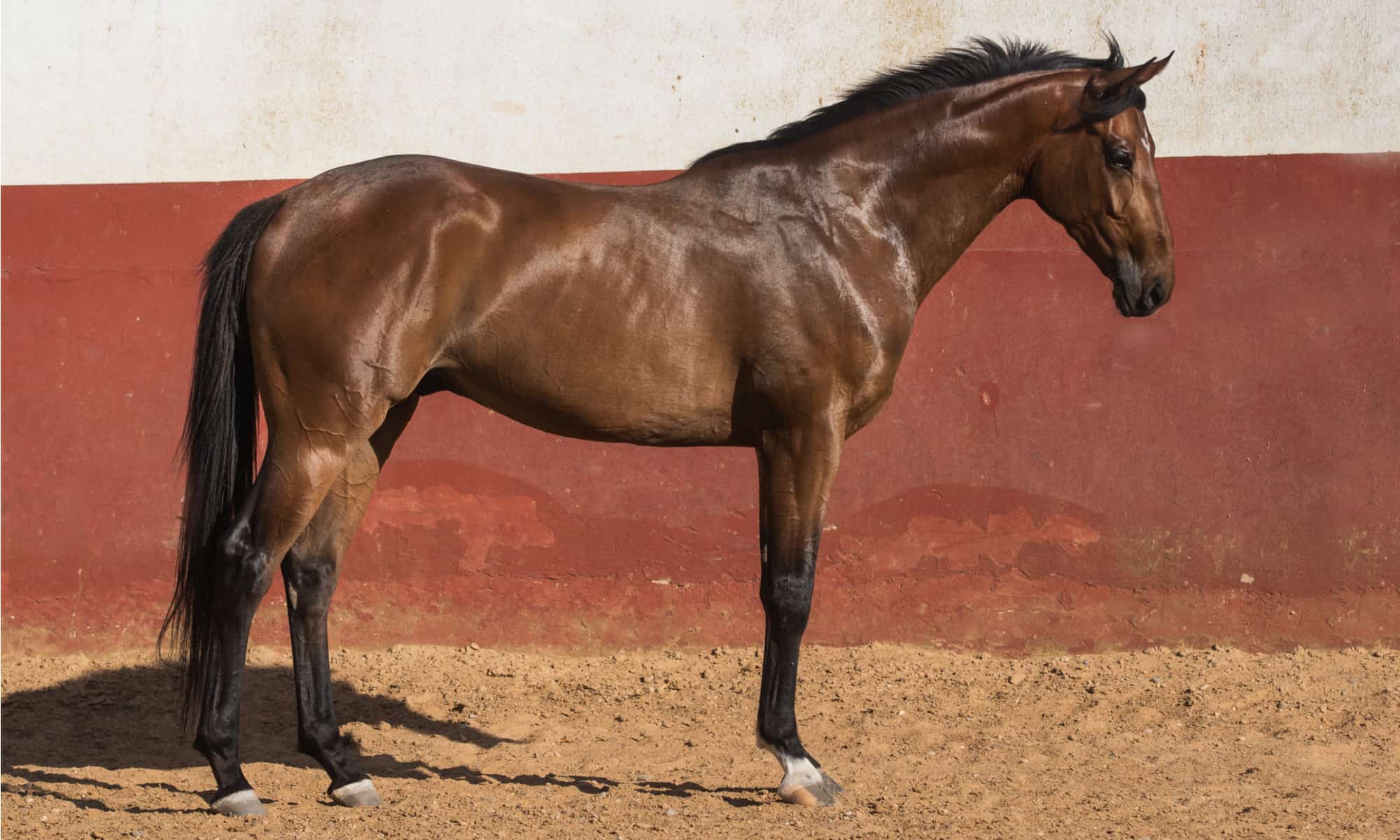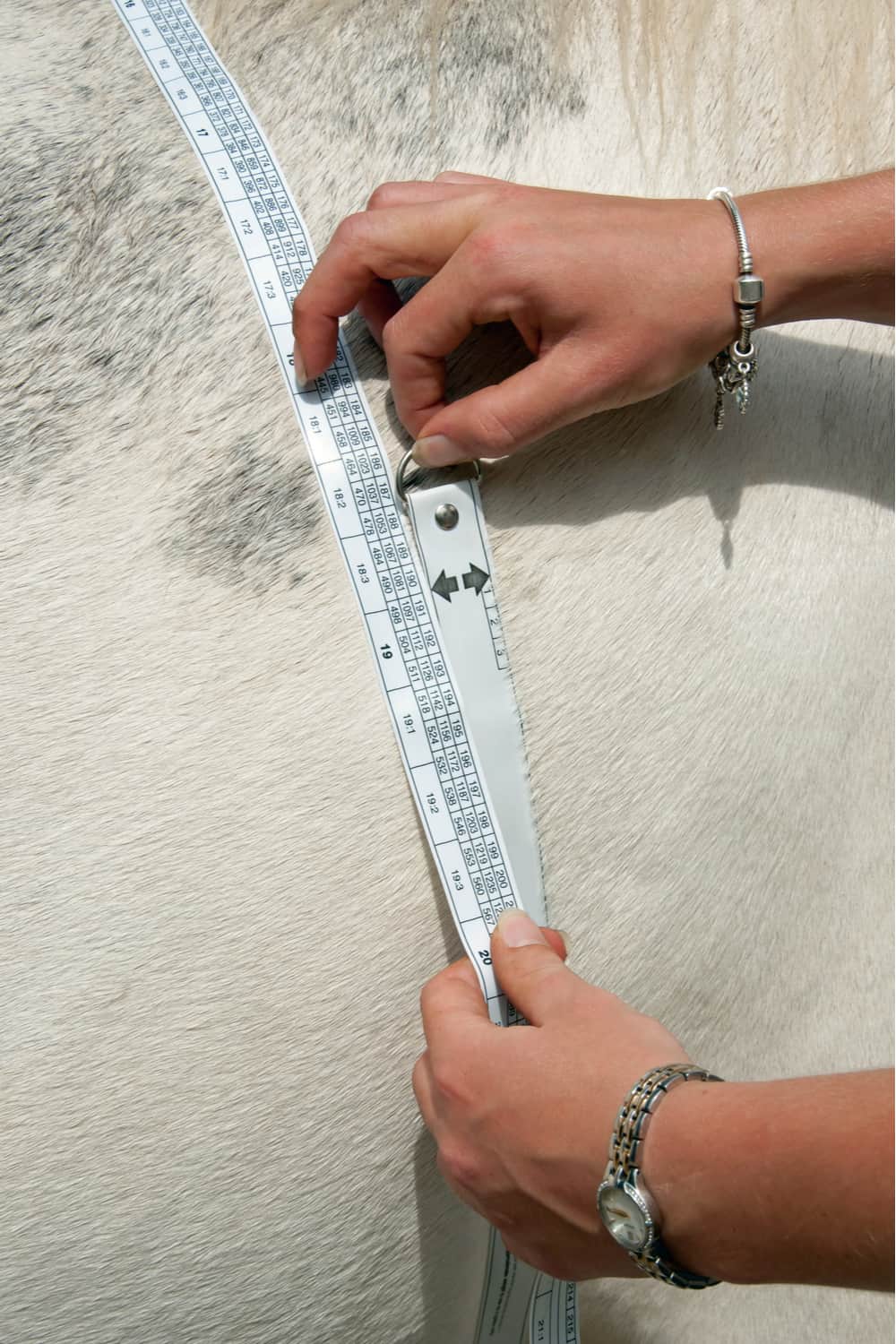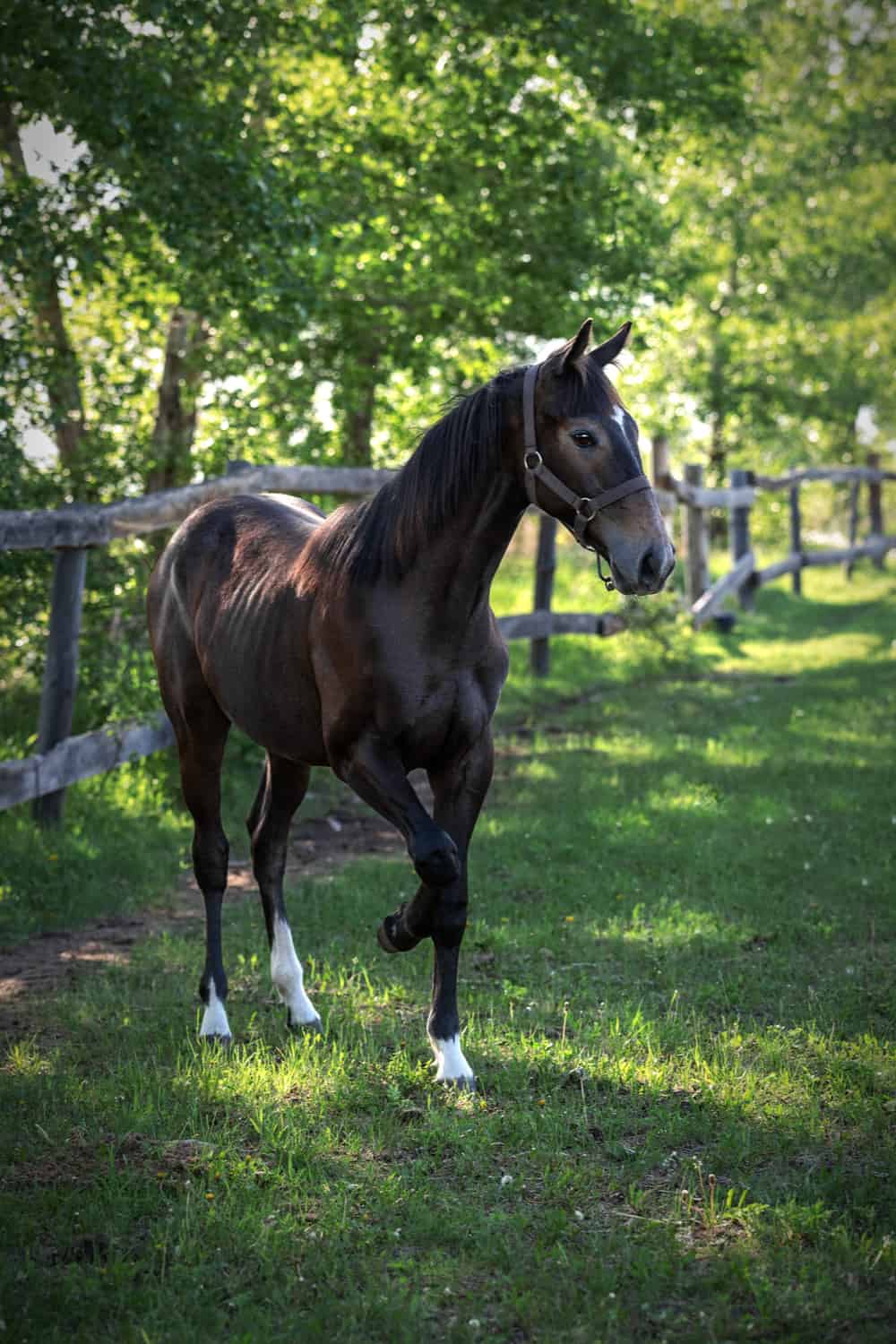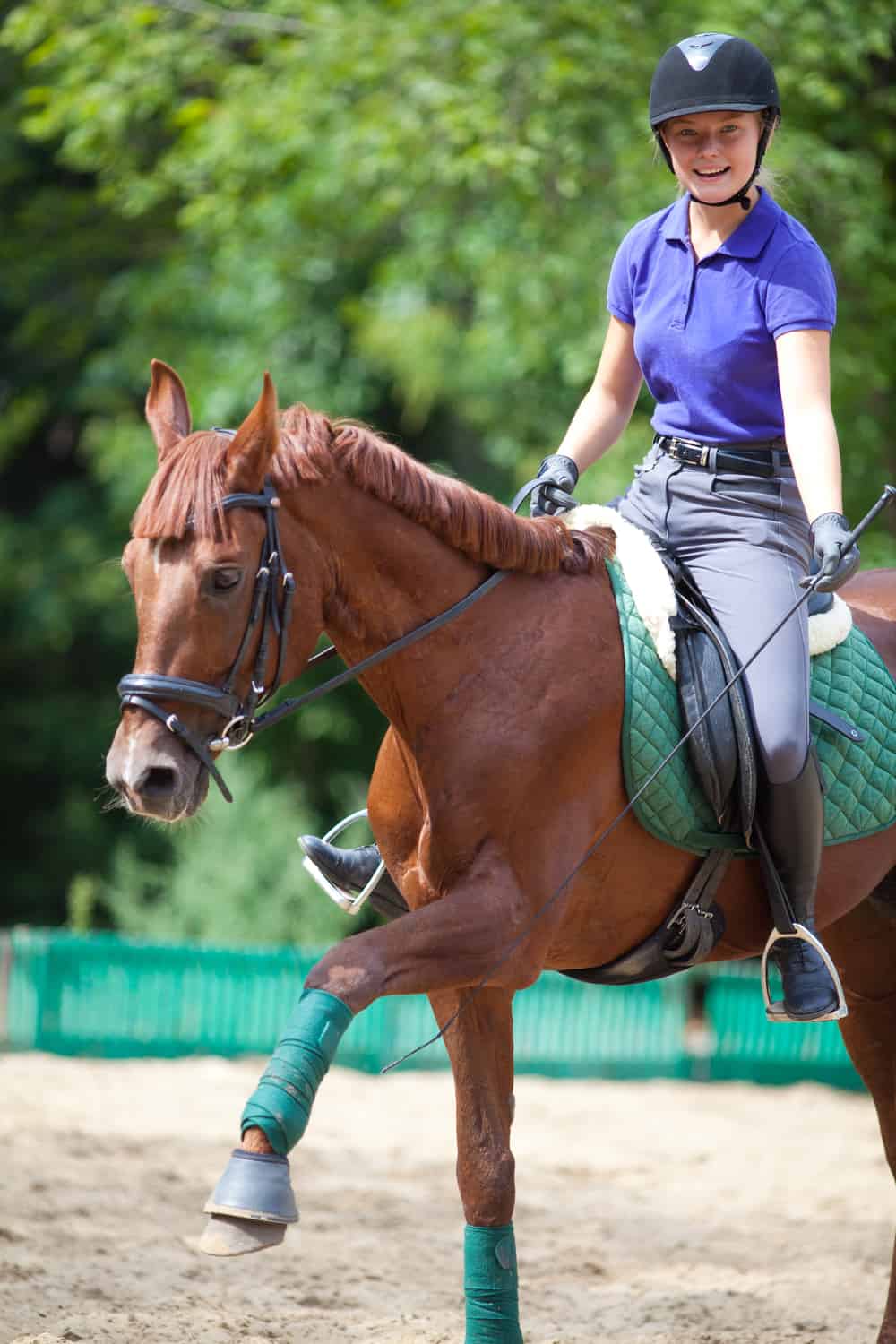If you talk to someone about your horse, you will probably emphasize its breed, color, and speed. However, on some occasions, like official tournaments, it is necessary to state equine body measures.
Horse categorization requires precisely measured height and weight, so you may ask yourself how to measure a horse? Let’s see what options do you have.
Reasons to Measure Your Horse
Once you met and befriend your horse, you will get to know its lifestyle, habits, diet, and personality. Then, you should regularly check its weight and height. If you have a foal, regular measuring will allow you to monitor its growth and development.
That way, you can prepare adequate meals and notice potential health problems on time. It is also vital to know the exact horse weight when you need to dose therapy.
When you want your horse to compete during official equestrian events, you need to determine the category it falls under. Finally, those measures are necessary when buying equipment, especially saddles that come in various shapes and sizes.
Measuring Horse Weight
Generally, tall horses are heavier than shorter ones, but their weight depends on many factors. The most important are breed, age, diet, and physical activity. For instance, two horses of the same height can differ in weight over 500 pounds (227 kg).
There are several ways to measure your horse. The quickest and most accurate is to use a scale. Still, horses are bulky animals, so suitable scales are rare and expensive. In most cases, you can find one at a local vet clinic or a ZOO.
The alternative is to measure the horse on a trailer or industrial scale. The procedure includes weighing an empty trailer and the one with a horse and calculating the difference.
Luckily, you have two more options easily applicable wherever you are. You can use a specially designed measuring tape and calculate a horse’s weight on your own or determine it with an online calculator.
If you don’t mind little math, measure your horse’s heart girth and body length. Pull the tape around the equine barrel widest part to get a heart girth value.
Then, determine a distance between an animal’s withers and its buttocks to get a body length, and use a formula to calculate horse weight in pounds:
(girth x girth x body length) / 300 = adult horse weight
A quicker way is to use an online calculator. It is quicker, and you won’t bother the horse by repeating measuring while trying to get accurate results.
Girth length |
Weight |
| 30 inches (76 cm) | 100 pounds (45.5 kg) |
| 45.5 inches (116 cm) | 300 pounds (136.5 kg) |
| 55 inches (140 cm) | 500 pounds (227 kg) |
| 64.5 inches (164 cm) | 800 pounds (364 kg) |
| 70.5 inches (178 cm) | 1,000 pounds (455 kg) |
| 75.5 inches (192 cm) | 1,200 pounds (454 kg) |
| 77.5 inches (197 cm) | 1,300 pounds(591 kg) |
Keep in mind that it can be problematic to measure a horse with a high and spiky wither. In that case, you will probably get different, often meaningless, and unusable values after a few attempts, particularly if you are a novice.
Horse Weight by Breed
Even when you see a horse for the first time, you can estimate its weight with considerable certainty when recognizing its breed. For example, Clydesdale, Shire, and Suffolk horses are much weightier than the Welsh Cob or Quarter horses.
Horse weight by breed |
|
| Breed | Average weight |
| Miniature Horse | 200 to 500 pounds (91 – 227 kg) |
| Quarter Horse | 1,000 to 1,300 pounds (454 – 589 kg) |
| Welsh Cob | 1,000 to 1,300 pounds (454 – 589 kg) |
| Andalusian | 1,200 to 1,300 pounds (544 – 589 kg) |
| Clydesdale | 1,600 to 1,800 pounds (726 – 816.5 kg) |
| Shire | 1,700 to 2,700 pounds (771 – 1225 kg) |
The heaviest horse ever was precisely the Shire named Samson that weighed 3,359 pounds (1,524 kg). It was also the tallest horse ever recorded. On the other hand, Miniature horses are light creatures with an average weight of 200 to 500 pounds (91 to 227 kg).
Calculating Horse Height
For some reason, many people believe that taller horses are speedier than short ones. However, the horse height and its speed are not in direct correlation. Tall horses may seem more vigorous, athletic, and even daunting, but their speed actually depends on strike length and frequency.
The hand has been a measure of horse height since ancient times. One hand is equal to four inches, so 62-inches equine is 15.5 hands (157.5 cm) high.
Height measuring is not complicated. Keep a horse still on the ground level and measure it by using tape or a measuring stick. The most practical solution is to buy a tool marked with inches on one side and hands on the other.
It is better to ask someone for help during the procedure. That person should keep the horse in place while you read the horse height.
Height |
Average Weight |
| 9 hands | 400 to 500 pounds (181 – 227 kg) |
| 10 hands | 530 to 600 pounds (240 – 272 kg) |
| 11 hands | 660 to 700 pounds (299 – 317.5 kg) |
| 12 hands | 700 to 800 pounds (299 – 363 kg) |
| 13 hands | 800 to 860 pounds (363 – 390 kg) |
| 14 hands | 900 to 1,200 pounds (408 – 544 kg) |
| 15 hands | 880 to 1,200 pounds (299 – 544 kg) |
| 16 hands | 1,100 to 1,400 pounds (499 – 635 kg) |
| 17+ hands | 1,500 to 2,200 pounds (680 – 998 kg) |
Remember that you shouldn’t place the tape on an animal’s skin unlike measuring horse weight. Instead, hold a measuring stick or tape perfectly vertical next to the horse’s body. Most owners often use a stick, a long metal rod with a bubble in a small glass drop for practical reasons.
Remember to measure the height from the top point of the horse’s withers to the ground. The drop allows you to determine the right angle when measuring. It is advisable to check the obtained height several times to get an accurate estimate. Once you learn how high your equine is, you can calculate its weight.
Pick a Right Horse for Yourself
Theoretically, you can ride any horse that can carry your weight. Still, many riders estimate and pick out a horse according to its build, stamina, and temperament. Since it is vital to find an animal that matches your measures, having precise horse height and weight is of great importance.
Rider inside leg |
Minimum horse height |
| 24 inches (61 cm) | 10 hands |
| 26 inches (66 cm) | 10.3 hands |
| 28 inches (71 cm) | 11.2 hands |
| 30 inches (76.2 cm) | 12.2 hands |
| 32 inches (81.3 cm) | 13.1 hands |
| 34 inches (86.4 cm) | 14 hands |
| 36 inches (91.4 cm) | 15 hands |
| 38 inches (96.5 cm) | 15.3 hands |
| 40 inches (102 cm) | 16.2 hands |
If you are tall, you won’t be thrilled to have legs just above the ground while riding a short horse. So, you should look for a higher animal. Ideally, the horse’s height should be approximately 60% of your inside leg.
If your inseam is 34 inches (86.4 cm), the minimal horse height should be 14 hands or 34 inches (86.4 cm). On the reverse, short people will probably feel uncomfortable while riding too large animals.
Horse Weight-carrying Capacity
Another thing to think about is that the horse you ride carries both you and all the necessary equipment. A healthy equine can handle a load of 20 to 25% of its weight while trotting and walking. If you plan to gallop, the load on a horse’s back shouldn’t exceed 15% of its mass.
As you can see, it is essential to determine a burden horse will carry and its purpose before choosing it. For example, your horse has to weigh over 1,000 pounds (455 kg) if your scale shows 200 pounds (91 kg). Only such an animal can carry you, a saddle, blankets, and other equipment.
Your weight |
Minimum horse weight |
| 110 pounds (50 kg) | 550 pounds (250 kg) |
| 150 pounds (68 kg) | 750 pounds (340 kg) |
| 180 pounds (82 kg) | 900 pounds (408 kg) |
| 200 pounds (91 kg) | 1,000 pounds (455 kg) |
| 250 pounds (113 kg) | 1,250 pounds (567 kg) |
| 280 pounds (127 kg) | 1,400 pounds (635 kg) |
| 300 pounds (136 kg) | 1,500 pounds (680 kg) |
A riding style should also impact your choice. English-style comes with lighter disciplines and a small saddle. Since an average Cross Country saddle weighs only 12.7 pounds (5.8 kg), you can pick a slender, slim horse without any concern.
Saddle type |
||
| Riding style | Type | Weight |
| Western | Roping | 45 pounds (20 kg) |
| Western | Cutting | 27 pounds (12 kg) |
| Western | Trail | 22 pounds (10 kg) |
| Western | Barrel Racing | 24 pounds (11 kg) |
| Western | Synthetic | 18.9 pounds (8.6 kg) |
| English | Jumping | 14.3 pounds (6.5 kg) |
| English | Cross country | 12.7 pounds (5.8 kg) |
| English | Synthetic | 13.3 pounds (6 kg) |
Many riders consider Western riding a more exciting, challenging, and demanding style comparing to English riding. Consequently, Western saddles are heavy and bulky, and you need to pick out a horse accordingly.
Keep in mind that a roping saddle increases a horse’s load by 45 pounds (20 kg). It is wise to choose a horse like the Shire with enough strength and stamina in such a case.
Summary
Horses can significantly vary in height and weight, depending on their breed. However, you should always measure the animal before using it. Fortunately, it is not a difficult task, and you can do it with measuring tape or a marked stick.











